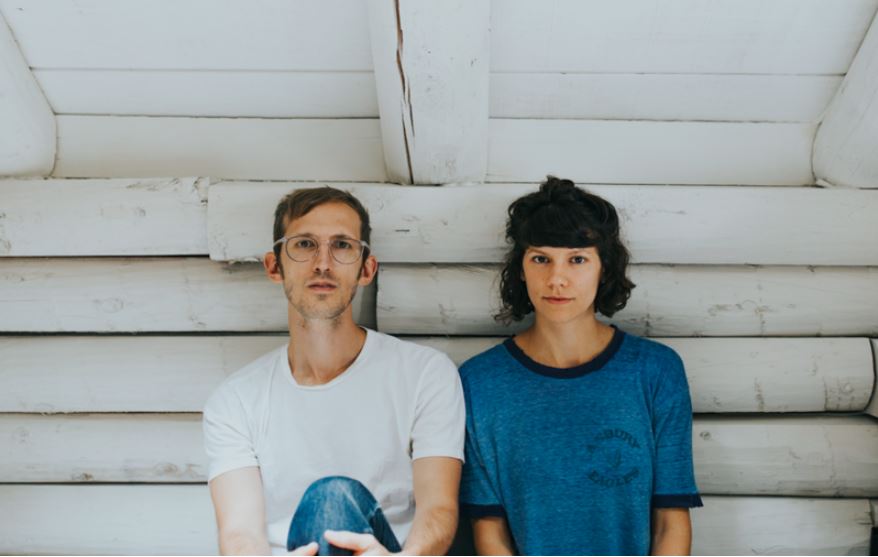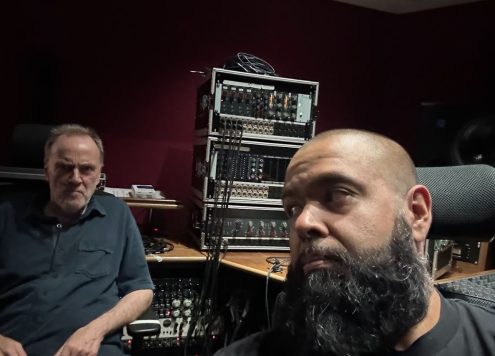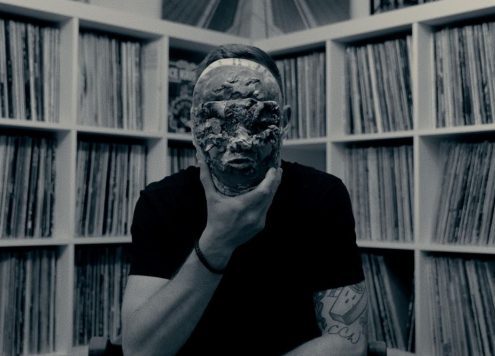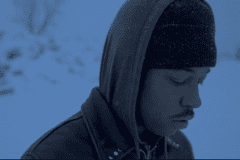Take a step into a room without any commotion transpiring. Step into an empty auditorium before the next thing takes the stage. Stand in front of a body of water and hear the cool crashing of waves in the distance. These examples of silence are far too ignored by most. We take for granted the simplicity of what a moment of stillness provides.
In the press release of Lowland Hum’s latest album Glyphonic, the duo’s story featuring tracking guitars offered a glimpse of their vision-the movement to embrace quietness. The backdrop of the work while Charlottesville, Virginia started to awake from a deep slumber was all that was needed to be shown of their push to block out any unnecessary noise.
We recently caught up with Lowland Hum to learn more about them and the new album, which was released today.
You toured over the past two years all around the US and Europe with Josh Ritter, Penny and Sparrow, and The Oh Hellos. What was the big takeaway for you after touring with these acts?
One of the gifts of being on the road with other artists is the opportunity to share your music with a large group of people who may not have otherwise heard your music. It was a nice surprise to discover that many people coming to those shows were eager to find a new favorite in the opening act. It was refreshing to be ourselves on stage, share what we make, and discover that it resonates with a broader swath of people than we thought possible. The other big takeaway was just how helpful it was to see the same people every day. Touring can be isolating and being on the road with another band adds in the much needed elements of familiarity and continuity in the midst of changing circumstances.
Besides creating music, how do you two find stillness in your lives when it’s rather easy for chaos to come in?
We try to carve out time, especially when we are not on the road, for slow, contemplative time. This sometimes involves reading, journaling, and centering prayer, which is a practice that involves sitting in present silence with eyes closed for an extended period of time. We are so often pouring out or taking in information and these set aside moments are a time with no agenda, intended to leave literal blank space in our day for dust to settle.
How did you two get together? Did you find the chemistry between you right away or did it take time for it to develop? When was the moment the two felt that being a full-time musician was the direction you needed to go?
We met through mutual friends in North Carolina. I was finishing art school at the time and Daniel was doing music solo. We didn’t begin our creative partnership until after we were pretty interested in each other romantically. The collaborations began when Daniel first asked me to design his album cover, and then asked me to sing harmonies on his album. We started writing songs, performing and touring together after getting married over 7 years ago. It felt kind of risky in the beginning. Sometimes we wonder what would have happened if we realized that one of us didn’t care for the other’s creative instincts? It would have been a very painful thing to discover. But we found that creating together was a really exciting exploration and we enjoyed the process and outcome. A couple of months into marriage, when balancing touring and other jobs became difficult, we decided to experiment with doing it full-time. We told ourselves we could always get other jobs if it didn’t turn out to be a viable path for us.
When writing the lyrics for your albums, is it collaborative or does one person write?
We both write and we write together. Sometimes the initial direction or momentum of a song comes from one or the other of us, but we pass each song back and forth a few times and we always sit down together to comb through ideas before a song is deemed complete. Because we both spend many of our nights performing these songs it is important to us that we both feel represented in them. Even if a song is coming from one of our perspectives more than the other, it is important that we can both stand behind it.
It’s been said that Glyphonic is your finest writing to date. What do you think that is?
We hope that as long as we continue to do this, we’ll grow in excellence at it. Something that excites us about Glyphonic is the way it builds off of our last full-length album, Thin. When we made Thin, we limited the arrangements to stay closer to what we can pull off in a live setting as just two people. The result felt like a true distillation of our creative instincts. On Glyphonic, we got to continue to explore further down that road and I think we found a sound that is even more fine-tuned.
How long did the process take for Glyphonic to come fully alive?
Glyphonic came rather quickly compared to other albums we have made. It came together over the course of a summer (2018). We wrote the songs over the course of a month or so, and recorded the album in our apartment over the following month before moving out to the countryside. It was mixed and mastered after our move and I made the artwork in our new home. By that fall it was all finished.
I’ve heard that you are about engaging with audiences in unconventional Q&As, passing out handmade lyric booklets, etc. Doing those sort of things, do you find the shows to be more intimate?
We try to be ourselves from the stage and we try to create an environment in which people in the audience might feel comfortable being themselves with us. The result often has a very intimate feeling.
August 12th will mark the two year anniversary of the horrific events in Charlottesville. Do you feel that all of the townspeople have come together to form a tighter bond after the tragedy?
The events of that summer were truly horrible and although many of the white supremacists came in from other places, I think it forced people (in both Charlottesville and other places) to see that violent racism and hatred are not things of the past. It also directed a spotlight on some important local issues. In the year that followed a palpable feeling of sobriety permeated the air, and there are streets in town that are perpetually covered in messages written in chalk commemorating the horrible events, but I wouldn’t say this place has healed and there is yet much work to be done, here and elsewhere.
You are now living in a nice log cabin a little bit outside of town? Has the move sparked any influence towards new material yet? What are looking forward to in the near future?
The move out to the country has been really good for us. Already we have found it to be a place that is conducive to both resting and creating and we are hopeful that it will inspire many new songs. We draw a lot of inspiration from nature, and it has been helpful to have a season of growing familiar with one little patch of land. While we both spent a lot of our childhoods outdoors, neither of us grew up in the country so it is a whole lot of new for us both. We are in the process of building a small recording studio at the back of the lot and we are hoping to have it finished by the end of this summer. We’ve never had a space dedicated solely to creative work. We have always either rented studios or set up our own recording gear in temporary unconventional spaces. The thought of being able to walk into that building with an idea and immediately lay it down in recorded form is thrilling to us. We hope it will be a safe space for ourselves and other artist friends to come and rest and create.











Social Media